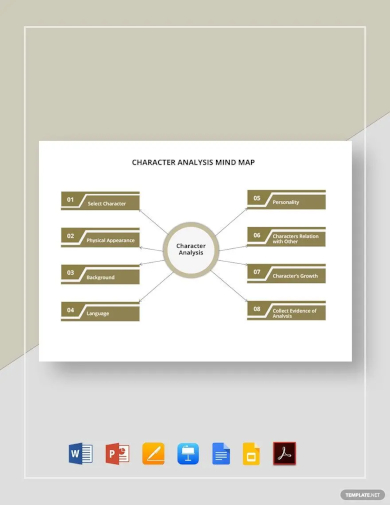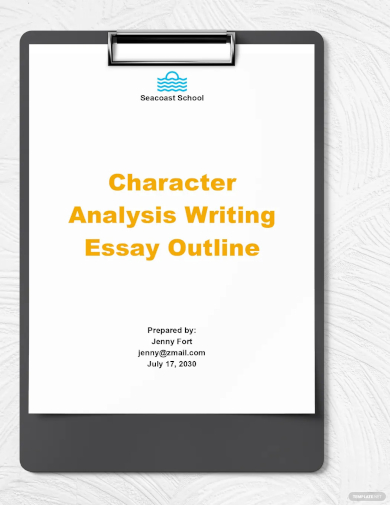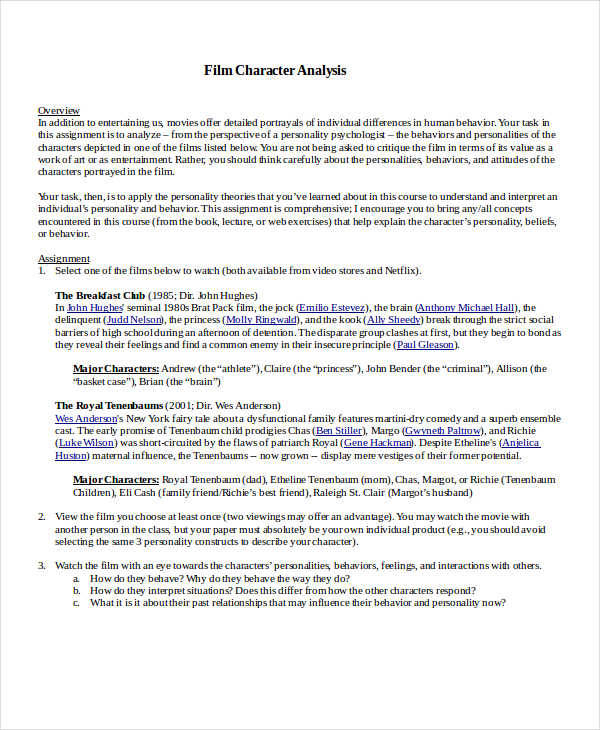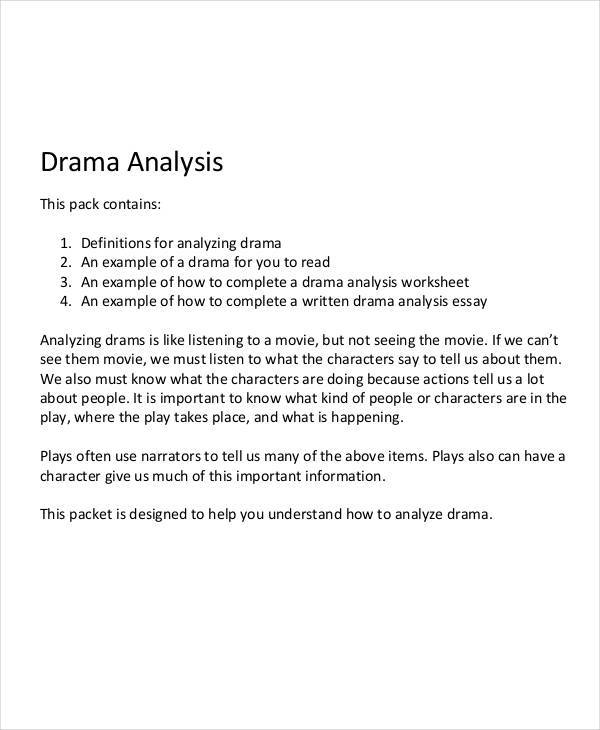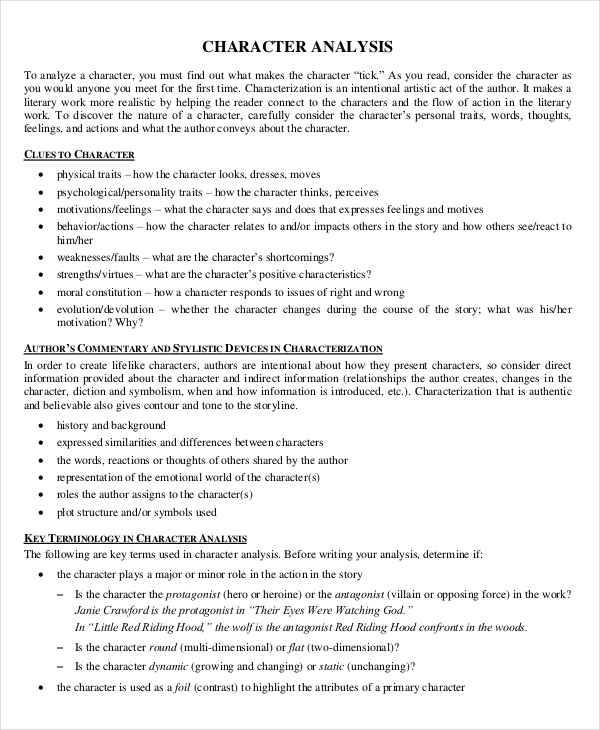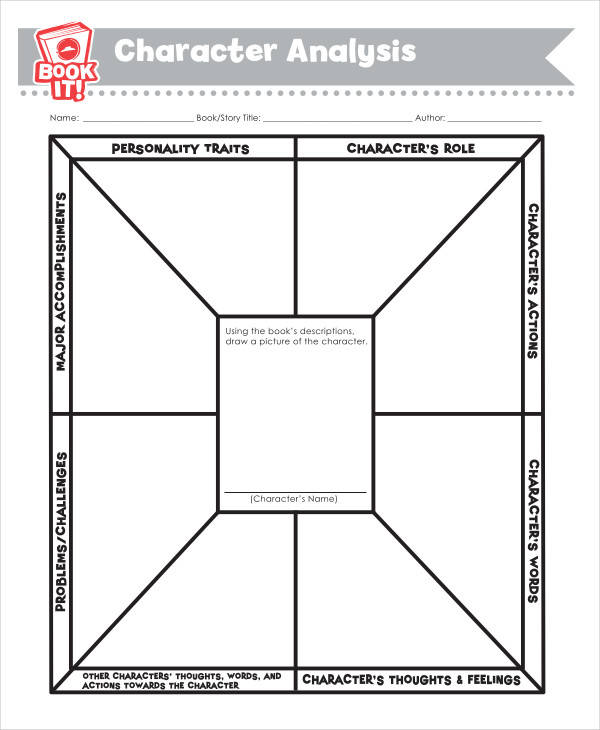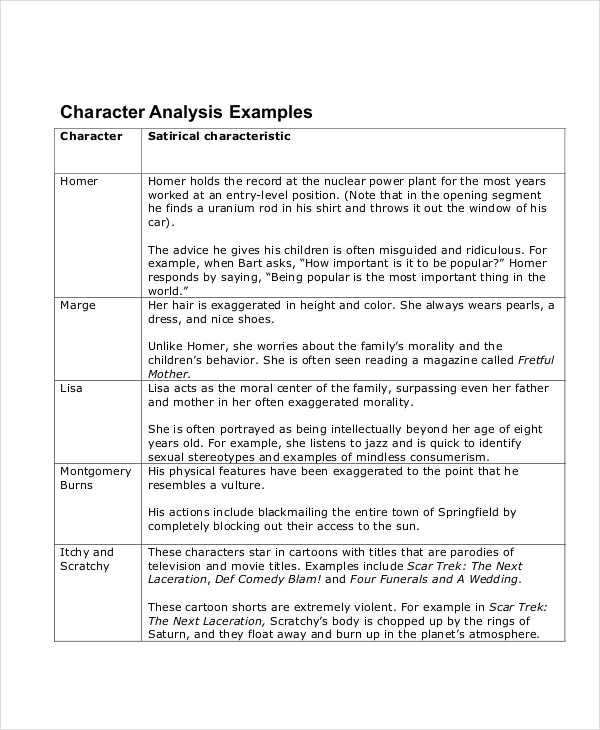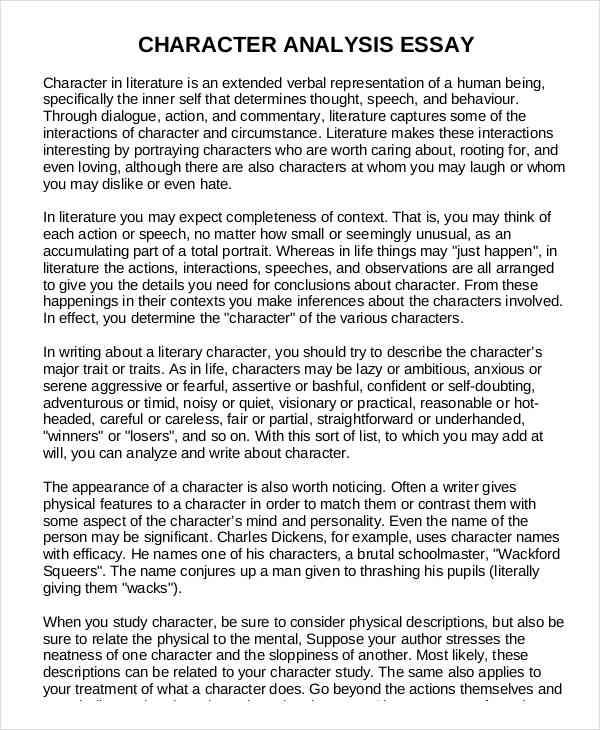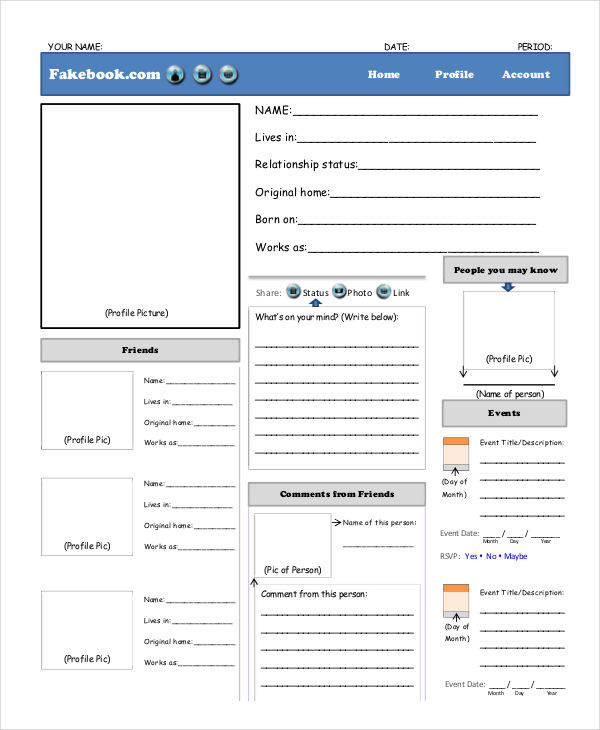What is an analysis? An analysis, as defined by the dictionary, “is a study of something to learn about its parts, what they do, and how they are related to each other.” A character analysis is useful in analyzing a character’s background and internal and external qualities. A behavior analysis is also one example.
Writing an analysis is useful in literary works, analysis essays, films, etc. Through a character analysis, you will be able to evaluate the main character in a story. If you need character analysis templates, you will be able to download templates below. You can also read more about character analysis below.
Character Analysis Mind Map Template
Character Analysis Writing Essay Outline Template
Sample Film Character Analysis Template
Character Analysis Outline Template
Analysis of Drama Character Template
Sample Character Analysis Template
How to Write a Character Analysis Outline
Here are the steps on how to create a character analysis outline sample. You can also use the character analysis samples available to guide you when creating one.
- Name – write the name of the character that you are writing about.
- Title – If you are writing a character analysis of a book character, write the title of the book, the name of the author, and the date the book was published.
- Setting – the setting is where you will write about the geographic location, and the date and time a particular scene takes place in the story.
- Physical Information – write about the physical characteristics of the character that you are writing about. Include the estimated age, height, weight, place of birth, etc.
- Personal Information – this is where you will write about the personal traits of the character. These include the cultural identity, sexuality, profession, religion, and political affiliation.
- Physical Appearance – describe the physical appearance of the character by specifying what he or she is wearing, and the character’s general appearance.
- Relationships – in this section, describe what the character’s relationship is like with other characters in the story.
- Character History – list relevant information of the character’s history and experiences.
Basic Character Analysis Template
Character Analysis Example
Character Analysis Essay Template
Facebook Character Analysis Template
Importance of a Character Analysis
In literary works and films, there is always a main character in the story. One importance of a character analysis is for individuals to be able to analyze and evaluate a particular character’s traits and personality, and his experiences. Throughout the progress of the story, the character usually experiences some highs and lows. Doing a character analysis is important to able to understand the character’s qualities and be able to understand how these experiences have changed and molded the character of the story. Character analysis essays are typically used in literary courses where they are required to make one.
Kinds of Characters
- Protagonists – a protagonist is the hero or the main sample character in a story.
- Antagonists – an antagonist is the opposite of a protagonist, also the villain in the story.
- Major – major characters are also the main characters in the story but not necessarily an antagonist or protagonist.
- Minor – minor characters are ones that support the major characters in the story; revolves around the main characters.
- Stereotypical – a stereotypical character refers to a common type of character in a story. For example, a clueless blond, happy fat person, etc.
- Foils – a type of character that is usually different from the main character in the story.
Related Posts
FREE 11+ Cost Volume Profit Analysis Samples & Templates in PDF | MS Word
FREE 6+ Corporate Portfolio Analysis Samples in PDF
FREE 10+ Fault Tree Analysis Samples in PDF
FREE 10+ Comp Analysis Samples in PDF
FREE 10+ Fishbone Analysis Samples in PDF
FREE 10+ Individual Swot Analysis Samples in PDF
FREE 10+ 5 Year Analysis Samples in PDF
FREE 10+ Benefit Costs Analysis Samples in PDF
FREE 10+ Job Hazard Analysis Samples in PDF
FREE 10+ Primary Source Analysis Samples in PDF
FREE 10+ Critical Path Analysis Samples in PDF
FREE 10+ Competition Analysis Samples in PDF
FREE 10+ Activity Hazard Analysis Samples in PDF
FREE 10+ Risk Benefit Analysis Samples in PDF
FREE 10+ SEO Competitor Analysis Samples in PDF

